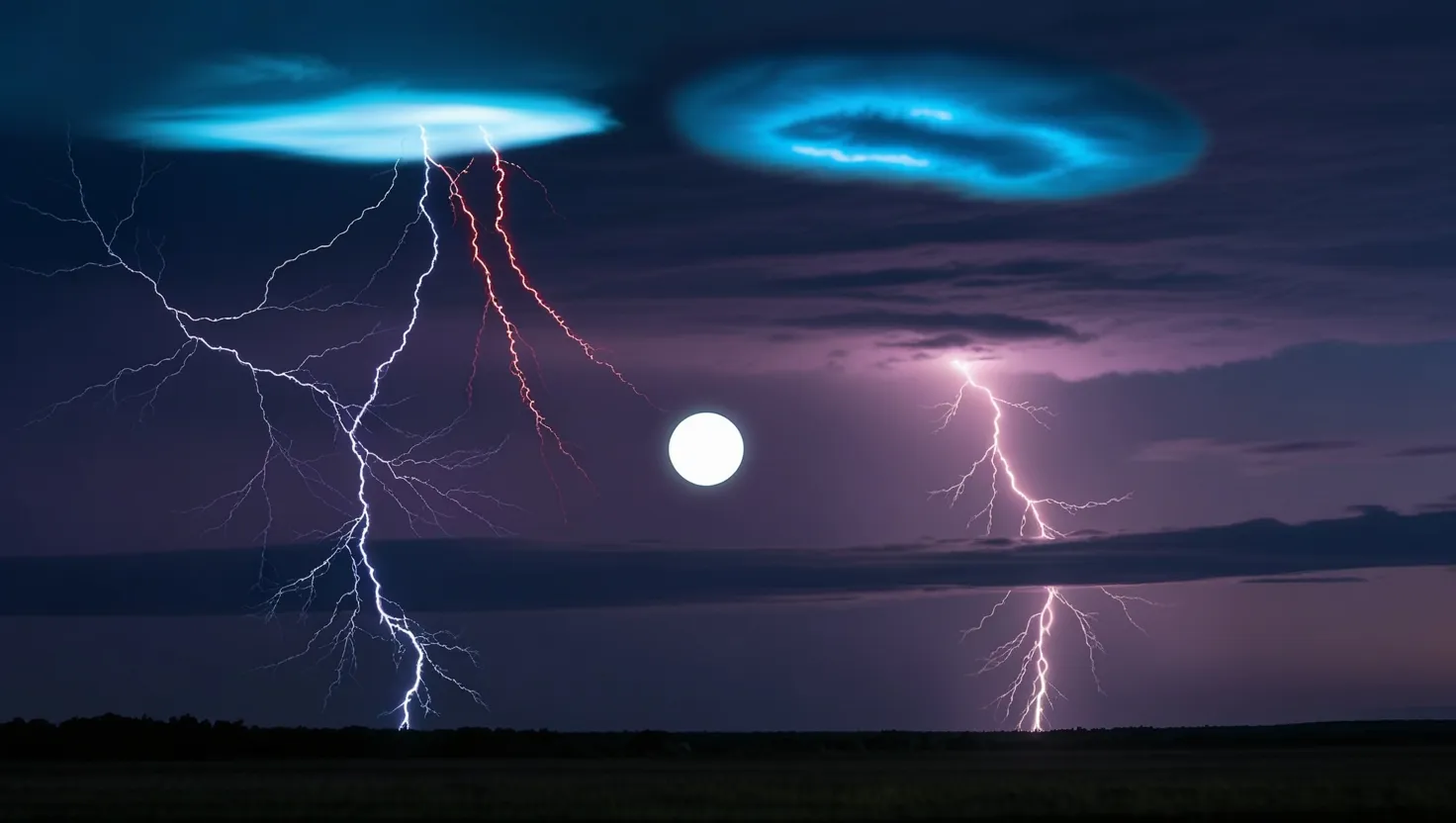If you’ve ever looked up at the sky and caught a glimpse of something rare—maybe a glowing orb darting among thunderclouds or a perfect circular hole in a blanket of clouds—you’ve probably wondered what strange forces play out above us. Sometimes, despite decades or centuries of study, our skies still keep secrets that science can’t untangle. I’m constantly amazed by how much we think we know, but also how much we’ve barely scratched the surface. Why do so many atmospheric puzzles remain just out of reach, even in the age of satellite imagery and high-speed computing?
Take ball lightning. Picture a thunderstorm—rain pelting down, thunder rumbling—and then, almost impossibly, a glowing sphere hovering just above the ground. These orbs have been known to float silently, pass through walls and windows, and then evaporate or explode with a bang. Some witnesses say they last only seconds, others have seen them glowing for up to a minute. For a long time, scientists considered them to be folklore, a trick of the eyes during an intense storm. Yet, over the last century, too many reliable observers—including pilots, physicists, and even entire groups—have reported ball lightning for it to be dismissed. There are dozens of laboratory attempts to simulate this effect, with mild success and dramatic failures. Some theories suggest microwaves, others invoke nanoparticle chemistry, but none account for the full suite of bizarre behaviors. Can something really pass through solid matter, leave no trace, and then vanish in an instant? We’re still searching for that answer.
“Science is the poetry of reality.” — Richard Dawkins
Sprites, elves, and blue jets add another layer of mystery—these aren’t woodland creatures, but massive luminous flashes shooting up from thunderclouds, sometimes stretching 50 miles or more into the upper atmosphere. Seen only since the advent of low-light video cameras, these events happen so quickly and high up that pilots and astronauts have been among the first to spot them. The names are whimsical, but the physics is anything but. Sprites are enormous tendril-shaped flashes glowing red, elves are expanding rings of light, and blue jets are streaks that shoot from the tops of storms toward space. No one is entirely sure what sets them off. They appear to be triggered by powerful lightning strikes, but not always. Are these events just energy venting off from the storm, or do they play a crucial role in transferring electricity between the atmosphere and space? Their fleeting nature means every video recording is a goldmine, and still, the questions outnumber the answers.
Have you ever noticed a perfect hole appear in a thick cloud layer, as if a cookie cutter pressed down from above? These are sudden atmospheric holes, often called fallstreak holes or punch holes. Sometimes they coincide with aircraft paths—planes can trigger a chain reaction by introducing ice crystals into supercooled clouds, making water droplets freeze and fall out rapidly. But just as often, these holes form with no nearby planes and persist far longer than simple ice fallout should allow. What causes the rapid, orderly retreat of the cloud edge? Some atmospheric physicists think local turbulence and microphysics are involved, but the scale and suddenness of these holes suggest we’re missing something fundamental about how clouds live and die.
“Somewhere, something incredible is waiting to be known.” — Carl Sagan
Now, let’s drift higher—almost to the edge of space—where noctilucent clouds form. These ghostly, electric-blue clouds have a shimmering, mysterious quality and only appear during the twilight hours of summer, 50 miles above Earth’s surface. For decades, they were considered a polar phenomenon—rare, high-latitude apparitions barely seen by anyone other than Arctic explorers. Yet lately, these clouds are turning up in lower latitudes and showing up earlier in the year. Theories abound—more methane in the atmosphere, extra water vapor expelled by rockets, or a subtle signature of global climate shifts. None of these explanations quite fit the pace and breadth of their expansion. Are they an innocent side effect of our technology, or a harbinger of deeper changes in the upper atmosphere? We’re left watching, year after year, as these clouds grow brighter and more widespread.
One of my favorite stories in atmospheric science unfolds in a quiet Norwegian valley called Hessdalen. For decades, locals have reported floating balls of light—sometimes white, sometimes yellow, sometimes flashing in patterns—hovering silently above the ground or skipping along the valley floor. Some appear for seconds, others linger for hours. Even outside researchers have set up camps to catch these lights, deploying sensors and cameras. Theories range from piezoelectric effects—the stress and crackle of rocks grinding deep under the valley floor— to plasma generated by rare geomagnetic conditions, to combustion of airborne chemicals. None fully explain the colors, durations, and undulating motion of the lights. Imagine camping in the valley and catching a sudden, silent orb drifting past: is it geology, the atmosphere, or something we haven’t even thought to test?
“Not everything that counts can be counted, and not everything that can be counted counts.” — Albert Einstein
And then there’s the phenomenon of hole punch clouds. Imagine a sky covered in subtlest white, then suddenly: a wide, perfect gap, sometimes circular, sometimes elongated, with wispy streaks of ice crystals tumbling below. Yes, aircraft can cause these by thrusting through supercooled cloud layers, but the process relies on a very precise sequence: the introduction of ice crystals triggers a rapid phase change in the cloud, causing droplets to freeze and fall, emptying the section above. This sounds straightforward, but laboratory studies still struggle to replicate the crispness and scale of real events. Why do only some flights trigger them, and why do the holes linger for so long? Does each hole reveal something overlooked about how clouds respond to sudden disturbances?
All these mysteries share a thread: our urge to look up and make sense of what we see, challenged by nature’s ability to surprise and confound. Even with advanced satellites, sensor networks, and decades of data, the sky continues to play tricks—reminding us how much is still unexplained. It’s humbling to realize the answers might not come in sudden eureka moments but with years of careful observation, open minds, and a willingness to let the questions linger.
Have you ever wondered if some unexplained sky phenomena simply don’t want to be understood? Or if maybe, in trying too hard to pin them down, we miss the bigger picture—how subtle, interconnected, and alive Earth’s atmosphere can be? I often think that these unsolved puzzles invite us not just to watch, but to imagine: Could a better understanding of ball lightning help us harness new forms of energy? Might unraveling sprites or jets change how we think about weather forecasting or even aviation safety? Could the spread of noctilucent clouds be a vital clue to changes in our planet that we’ve only started to grasp?
“The most beautiful experience we can have is the mysterious. It is the fundamental emotion that stands at the cradle of true art and true science.” — Albert Einstein
In the end, the greatest lesson the atmosphere teaches us is patience. Each new mystery—whether a glowing sphere, a sky-spanning flash, or a silent floating light—reminds us that some stories take decades or centuries to unfold. The joy isn’t just in solving them, but in witnessing them, asking questions, and admitting with wonder: sometimes, the sky knows things we don’t. Which of these atmospheric mysteries would you most like to witness firsthand? And if you did, would you dare to trust your own eyes—or would you, like so many before, find yourself wondering whether you’d really seen anything at all?






